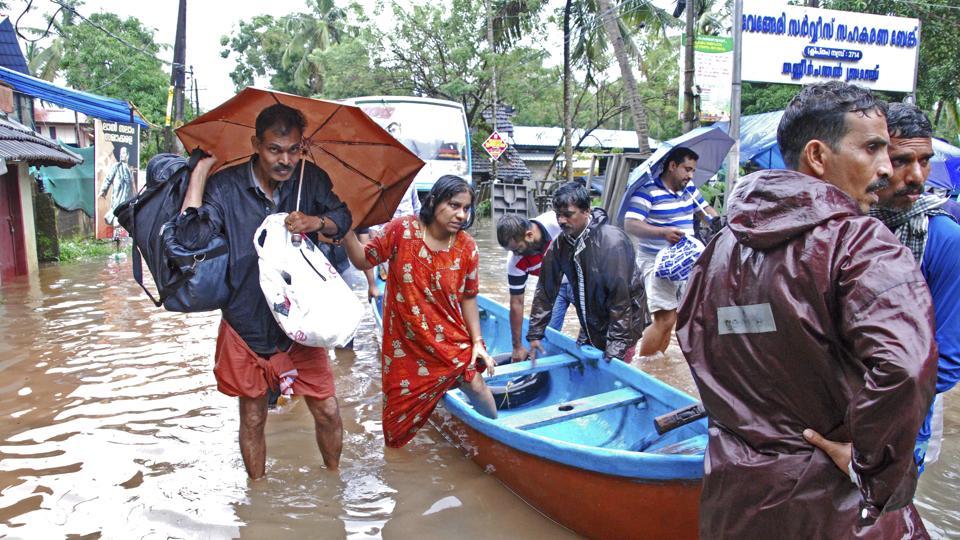The Indian Air Force and Army relief and rescue teams on Friday started food packet distribution among marooned people in different places in Kerala as the situation triggered by the state’s worst floods in a century remained grave.
Rescue teams are carrying out round-the-clock operation but many people in the state are still marooned. Continuous rain, landslides and floods have claimed more than 100 lives so far and have brought the public transport system to a virtual halt.
With roads cut off, many areas are now facing fuel shortage and many hospitals are grappling with shortage of oxygen cylinders as the floods disrupted supplies with many towns still under water. A shortage of medicines has added to Kerala’s mounting woes.
Air force helicopters resumed relief and rescue operations Friday morning even as a humanitarian crisis continued to unfold with an estimated three lakh people now living in relief camps. Many of those still marooned have turned to social media for help.
Many youngsters have turned volunteers to help the flood affected people. As crisis deepened, many have open up their homes for flood survivors.
The Met office had forecast more rain for the next two days. The state government has asked telecom companies to restore network which has been disrupted.
Prime Minister Narendra Modi who spoke to Kerala Chief Minister Pinarayi Vijayan on Friday morning, tweeted that he would be visiting the state in the evening.
On Saturday, Modi will undertake an aerial survey of the flood ravaged areas, Union Tourism Minister K J Alphons said.
On Thursday evening, the Kerala government dismissed rumours in social media sites like WhatsApp and Facebook that the Mullaperiyar dam has developed some cracks.
“This rumour is completely baseless and the dam has not developed any cracks as alleged. These rumours are creating unnecessary panic among people living in downstream in the Periyar catchment,” Water Resources secretary Tinku Biswal said.
People along downstream areas have been bearing the brunt of floods after most of Kerala’s 39 dams were forced to open their sluice gates to release excess water from their reservoirs.




